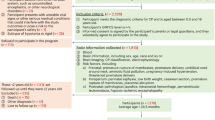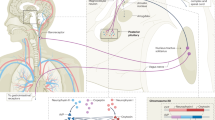Abstract
Riley Day syndrome, commonly referred to as familial dysautonomia (FD), is a genetic disease with extremely labile blood pressure owing to baroreflex deafferenation. Chronic renal disease is very frequent in these patients and was attributed to recurrent arterial hypotension and renal hypoperfusion. Aggressive treatment of hypotension, however, has not reduced its prevalence. We evaluated the frequency of kidney malformations as well as the impact of hypertension, hypotension and blood pressure variability on the severity of renal impairment. We also investigated the effect of fludrocortisone treatment on the progression of renal disease. Patients with FD appeared to have an increased incidence of hydronephrosis/reflux and patterning defects. Patients <4 years old had hypertension and normal estimated glomerular filtration rates (eGFR). Patients with more severe hypertension and greater variability in their blood pressure had worse renal function (both, P<0.01). In contrast, there was no relationship between eGFR and the lowest blood pressure recorded during upright tilt. The progression of renal disease was faster in patients receiving fludrocortisone (P<0.02). Hypertension precedes kidney disease in these patients. Moreover, increased blood pressure variability as well as mineralocorticoid treatment accelerate the progression of renal disease. No association was found between hypotension and renal disease in patients with FD.
This is a preview of subscription content, access via your institution
Access options
Subscribe to this journal
Receive 12 digital issues and online access to articles
$119.00 per year
only $9.92 per issue
Buy this article
- Purchase on Springer Link
- Instant access to full article PDF
Prices may be subject to local taxes which are calculated during checkout



Similar content being viewed by others
References
Slaugenhaupt SA, Blumenfeld A, Gill SP, Leyne M, Mull J, Cuajungco MP et al. Tissue-specific expression of a splicing mutation in the IKBKAP gene causes familial dysautonomia. Am J Hum Genet 2001; 68 (3): 598–605.
Norcliffe-Kaufmann LJ, Axelrod F, Kaufmann H . Afferent baroreflex failure in familial dysautonomia. Neurology 2010; 75 (21): 1904–1911.
Pearson J, Gallo G, Gluck M, Axelrod F . Renal disease in familial dysautonomia. Kidney Int 1980; 17 (1): 102–112.
Elkayam L, Matalon A, Tseng CH, Axelrod F . Prevalence and severity of renal disease in familial dysautonomia. Am J Kidney Dis 2006; 48 (5): 780–786.
Ratcliffe PJ, Moonen CT, Holloway PA, Ledingham JG, Radda GK . Acute renal failure in hemorrhagic hypotension: cellular energetics and renal function. Kidney Int 1986; 30 (3): 355–360.
Dobyan DC, Nagle RB, Bulger RE . Acute tubular necrosis in the rat kidney following sustained hypotension: physiologic and morphologic observations. Lab Invest 1977; 37 (4): 411–422.
Durakovic Z . Does arterial hypotension due to cardiogenic shock in older patients lead to functional oliguria or to acute renal failure? Korean J Intern Med 1997; 12 (1): 39–44.
Axelrod FB . Familial dysautonomia: a review of the current pharmacological treatments. Expert Opin Pharmacother 2005; 6 (4): 561–567.
Axelrod FB, Goldberg JD, Rolnitzky L, Mull J, Mann SP, Gold von Simson G et al. Fludrocortisone in patients with familial dysautonomia-assessing effect on clinical parameters and gene expression. Clin Auton Res 2005; 15 (4): 284–291.
Wuhl E, Trivelli A, Picca S, Litwin M, Peco-Antic A, Zurowska A et al. Strict blood-pressure control and progression of renal failure in children. N Engl J Med 2009; 361 (17): 1639–1650.
Rothwell PM . Limitations of the usual blood-pressure hypothesis and importance of variability, instability, and episodic hypertension. Lancet 2010; 375 (9718): 938–948.
Cockcroft DW, Gault MH . Prediction of creatinine clearance from serum creatinine. Nephron 1976; 16 (1): 31–41.
Schwartz GJ, Gauthier B . A simple estimate of glomerular filtration rate in adolescent boys. J Pediatr 1985; 106 (3): 522–526.
Levey AS, Bosch JP, Lewis JB, Greene T, Rogers N, Roth D . A more accurate method to estimate glomerular filtration rate from serum creatinine: a new prediction equation. Modification of Diet in Renal Disease Study Group. Ann Intern Med 1999; 130 (6): 461–470.
Weizer AZ, Silverstein AD, Auge BK, Delvecchio FC, Raj G, Albala DM et al. Determining the incidence of horseshoe kidney from radiographic data at a single institution. J Urol 2003; 170 (5): 1722–1726.
Kupferman JC, Druschel CM, Kupchik GS . Increased prevalence of renal and urinary tract anomalies in children with Down syndrome. Pediatrics 2009; 124 (4): e615–e621.
Boer DP, de Rijke YB, Hop WC, Cransberg K, Dorresteijn EM . Reference values for serum creatinine in children younger than 1 year of age. Pediatr Nephrol 2010; 25 (10): 2107–2113.
Mezey E, Parmalee A, Szalayova I, Gill SP, Cuajungco MP, Leyne M et al. Of splice and men: what does the distribution of IKAP mRNA in the rat tell us about the pathogenesis of familial dysautonomia? Brain Res 2003; 983 (1–2): 209–214.
Norcliffe-Kaufmann L, Axelrod F, Kaufmann H . Afferent baroreflex failure in familial dysautonomia. Neurology 2010; 75 (21): 1904–1911.
Hurtado R, Bub G, Herzlinger D . The pelvis-kidney junction contains HCN3, a hyperpolarization-activated cation channel that triggers ureter peristalsis. Kidney Int 2010; 77 (6): 500–508.
Tozawa M, Iseki K, Yoshi S, Fukiyama K . Blood pressure variability as an adverse prognostic risk factor in end-stage renal disease. Nephrol Dial Transplant 1999; 14 (8): 1976–1981.
Shan ZZ, Dai SM, Su DF . Arterial baroreflex deficit induced organ damage in sinoaortic denervated rats. J Cardiovasc Pharmacol 2001; 38 (3): 427–437.
Zar T, Peixoto AJ . Paroxysmal hypertension due to baroreflex failure. Kidney Int 2008; 74 (1): 126–131.
Saeki T, Suzuki K, Yamazaki H, Miyamura S, Koike H, Morishita H et al. Four cases of pheochromocytoma in patients with end-stage renal disease. Intern Med 2003; 42 (10): 1011–1015.
Yver L, Jaulin JP, Nanhuck H, Rivet P . Pheochromocytoma in a long-term hemodialysis patient. Am J Kidney Dis 1991; 18 (2): 276–277.
Rekhtman Y, Bomback AS, Nash MA, Cohen SD, Matalon A, Jan DM et al. Renal transplantation in familial dysautonomia: report of two cases and review of the literature. Clin J Am Soc Nephrol 2010; 5 (9): 1676–1680.
Vagaonescu TD, Saadia D, Tuhrim S, Phillips RA, Kaufmann H . Hypertensive cardiovascular damage in patients with primary autonomic failure. Lancet 2000; 355 (9205): 725–726.
Hall CE, Hall O . Cardiac and renal lesions due to fludrocortisone and factors influencing their development. Tex Rep Biol Med 1961; 19: 774–784.
Shibao C, Gamboa A, Diedrich A, Biaggioni I . Management of hypertension in the setting of autonomic failure: a pathophysiological approach. Hypertension 2005; 45 (4): 469–476.
Acknowledgements
This work was supported by a grant from the Dysautonomia Foundation, Inc. the National Institutes of Health (U54-NS065736-01) and FDA Office of Rare Diseases (R01-FD003731-01).
Author information
Authors and Affiliations
Corresponding author
Ethics declarations
Competing interests
Dr Norcliffe-Kaufmann receives research support from the NIH and the FDA. Dr Axelrod receives research support from the Dysautonomia Foundation, Inc. Dr Kaufmann serves on a scientific advisory board for Chelsea Therapeutics; serves as Editor-in-Chief of Clinical Autonomic Research; and receives research support from the NIH, the FDA, and the Dysautonomia Foundation, Inc.
Rights and permissions
About this article
Cite this article
Norcliffe-Kaufmann, L., Axelrod, F. & Kaufmann, H. Developmental abnormalities, blood pressure variability and renal disease in Riley Day syndrome. J Hum Hypertens 27, 51–55 (2013). https://doi.org/10.1038/jhh.2011.107
Received:
Revised:
Accepted:
Published:
Issue Date:
DOI: https://doi.org/10.1038/jhh.2011.107
Keywords
This article is cited by
-
Familial dysautonomia
Clinical Autonomic Research (2023)
-
Gastrointestinal bleeding in children with familial dysautonomia: a case–control study
Clinical Autonomic Research (2023)
-
Management/Treatment of Lambert-Eaton Myasthenic Syndrome
Current Treatment Options in Neurology (2021)
-
Bone biomechanical properties and tissue-scale bone quality in a genetic mouse model of familial dysautonomia
Osteoporosis International (2021)
-
Hereditary Sensory and Autonomic Neuropathies: Adding More to the Classification
Current Neurology and Neuroscience Reports (2019)



